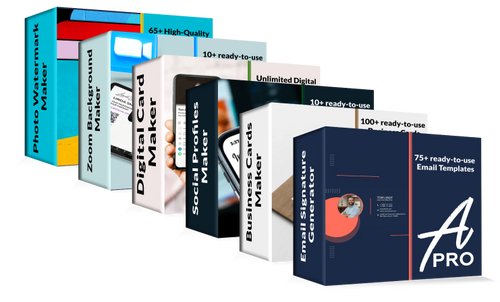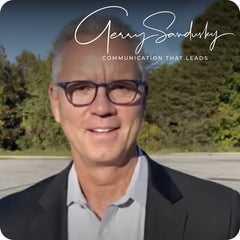Although the constant flood of emails might sometimes feel like a strong obstacle to productivity, with the correct strategy handling your inbox will become second nature in your everyday life. Effective communication and time management for professionals in many disciplines—from corporate managers to freelancers—dependent on an orderly inbox. This email management guide offers a clear, methodical approach to help you sort through the mess, prioritize your emails, and have a neat digital workspace, therefore enabling you to work smarter and more successfully.
Importance Of Inbox Management
Effective inbox management is crucial for maintaining productivity and reducing stress in today's fast-paced professional environment. By organizing and prioritizing emails, individuals can ensure that critical communications are addressed promptly, preventing important messages from being overlooked. A well-managed inbox also helps maintain a clear and focused mind, allowing professionals to allocate their time and energy to high-value tasks rather than being bogged down by overwhelming emails. Ultimately, mastering inbox management leads to improved efficiency, better time management, and enhanced professional growth.
How To Manage Inbox
Step 1: Set Clear Email Management Goals
Begin by defining what you want to achieve with your email management. Identify your priorities, such as responding to client inquiries within 24 hours or keeping your email inbox below a certain number of unread emails. Establish specific time blocks in your daily schedule dedicated solely to managing emails, ensuring that you are not constantly distracted by incoming messages throughout the day.
Step 2: Organize Your Inbox
Create a structured system of folders and labels to categorize your emails. This can include folders for different projects, clients, or types of communication. Use filters and rules to automatically sort incoming emails into these folders, reducing the time spent manually organizing your inbox. This step helps in quickly locating important emails and maintaining a tidy inbox.
Step 3: Prioritize Your Emails
Identify high-priority messages that require immediate attention and address them first. Implement the two-minute rule: if an email can be responded to in two minutes or less, handle it right away. For emails that require more time, flag them for follow-up and schedule a specific time to address them. This approach ensures that urgent matters are dealt with promptly while less critical emails are managed efficiently.
Step 4: Maintain a Clean Inbox
Regularly archive or delete emails that are no longer needed to prevent your inbox from becoming cluttered. Unsubscribe from newsletters and promotional emails that do not add value to your professional life. By keeping your inbox clean, you can focus on the emails that truly matter and maintain a sense of control over your digital workspace.
Step 5: Utilize Email Management Tools
Investigate several email management applications and add-ons that assist in simplifying your work. By automating repetitive chores like email sorting or follow-up reminders, these tools help you to save a lot of time. Advanced email apps like snoozing emails or scheduling sends might help you be even more efficient and guarantee proper handling of critical communications.
Step 6: Develop Consistent Email Habits
Establish consistent habits for checking and responding to emails. Designate specific times during the day to review your inbox, rather than constantly monitoring it. This practice helps in maintaining focus on other tasks and reduces the stress of being perpetually connected. Respond promptly and efficiently to emails during these designated times, ensuring that your communication remains timely and professional.
Which Emails To Prioritize?
Prioritizing emails effectively involves identifying those that are most critical to your professional responsibilities and goals. High-priority emails typically include messages from key clients, supervisors, or team members that require immediate action or decision-making. Emails related to ongoing projects, deadlines, or urgent issues should also be addressed promptly. Additionally, any communication that impacts your business operations, such as supplier updates or customer inquiries, should be given precedence. By focusing on these essential emails first, you can ensure that important matters are handled efficiently, thereby maintaining a smooth workflow and strong professional relationships.
Should You Unsubscribe To Email Newsletters?
Unsubscribing from email newsletters can be a highly effective strategy for maintaining a clean and manageable inbox. While some newsletters provide valuable industry insights or updates, many can contribute to unnecessary clutter and distract from more important communications. Evaluate each newsletter's relevance to your professional goals and daily responsibilities. If a newsletter consistently offers useful information, consider keeping it; otherwise, unsubscribe to reduce the volume of incoming emails. This chosen method helps you simplify your inbox so that you can concentrate on important messages and necessary chores without becoming swamped by non-essential material.
What Kind Of Automations Can I Use For Inbox Management?
- Email Filters and Rules: Set up filters to automatically sort incoming emails into specific folders based on criteria such as sender, subject, or keywords. This helps in organizing your inbox and prioritizing important messages.
- Auto-Reply Messages: Use auto-reply features to send automated responses when you are unavailable, ensuring that senders are informed of your status and expected response time.
- Email Scheduling: Schedule emails to be sent at a later time or date, allowing you to manage your communication more effectively and ensuring that messages are sent at optimal times.
- Snooze Emails: Utilize the snooze function to temporarily remove emails from your inbox and have them reappear at a designated time when you are ready to address them.
- Automated Follow-Up Reminders: Set up reminders for follow-up actions on specific emails, ensuring that important tasks and communications are not forgotten.
- Unsubscribe Tools: Use tools that automatically identify and help you unsubscribe from unwanted newsletters and promotional emails, reducing inbox clutter.
- Template Responses: Create and use email templates for common responses to save time and ensure consistency in your communication.
- Integration with Task Management Apps: Integrate your email with task management apps to convert emails into tasks, helping you keep track of action items and deadlines more efficiently.
How Do I Know I Reached An Email Overload?
Recognizing email overload involves identifying key signs that your inbox is becoming unmanageable and negatively impacting your productivity. Common indicators include feeling overwhelmed by the sheer volume of unread emails, missing important messages or deadlines, and spending excessive time sorting through your inbox rather than focusing on high-value tasks. Additionally, if you find yourself frequently stressed or anxious about checking your email, or if your inbox is cluttered with numerous irrelevant or redundant messages, it's a clear sign that you have reached email overload. Addressing these symptoms promptly by implementing effective email management strategies can help restore order and efficiency to your digital communication.
Should I Use Email Categories For Organization?
Using email categories and subfolders for organization is a highly effective method to streamline your inbox and enhance productivity. By categorizing emails into specific folders or labels, such as "Urgent," "Projects," "Clients," or "Follow-Up," you can quickly identify and prioritize messages based on their importance and relevance. This system allows for easier navigation and retrieval of emails, reducing the time spent searching for specific communications. Additionally, categorizing emails helps in maintaining a tidy inbox, preventing important messages from getting lost in the clutter. Overall, implementing email categories fosters a more organized and efficient approach to managing your digital correspondence.
Inbox Zero and Management Tips
- Set Clear Goals: Define what achieving Inbox Zero means for you, such as having no unread emails or ensuring all emails are categorized and addressed by the end of the day.
- Use Folders and Labels: Organize your emails into specific folders or labels to categorize and prioritize messages, making it easier to manage and locate important communications.
- Implement Filters and Rules: Automate the sorting process by setting up filters and rules that direct incoming emails to designated folders based on criteria like sender or subject.
- Adopt the Two-Minute Rule: If an email can be responded to or addressed in two minutes or less, handle it immediately to prevent small tasks from piling up.
- Schedule Email Time: Allocate specific times during the day to check and respond to emails, reducing constant distractions and allowing for focused work periods.
- Unsubscribe from Unnecessary Emails: Regularly review and unsubscribe from newsletters or promotional emails that do not add value, minimizing inbox clutter.
- Archive or Delete Regularly: Consistently archive or delete emails that are no longer needed to maintain a clean and organized inbox.
- Utilize Email Management Tools: Leverage tools and extensions that offer features like snoozing emails, scheduling sends, and automated follow-up reminders to streamline your email workflow.
Conclusion
Mastering inbox management is essential for maintaining productivity and reducing stress in today's fast-paced professional landscape. By setting clear goals, organizing emails with folders and labels, prioritizing critical messages, and leveraging automation tools, individuals can transform their email workflow into a streamlined and efficient process. Implementing these strategies not only helps in achieving Inbox Zero but also fosters a more focused and proactive approach to digital communication. Ultimately, effective inbox management empowers professionals to reclaim their time, enhance their efficiency, and drive their professional growth forward.
Final Thoughts
Elevate your brand with Artlogo's unmatched design expertise. Our expert designers are adept at crafting personalized handwritten signatures, logos, and QR code business cards that resonate with your industry and highlight your unique style. Embrace endless opportunities and create a memorable impact with Artlogo's creative and unique designs, including online signatures and e-signatures, that truly represent your individuality.
Sources



























Share to: